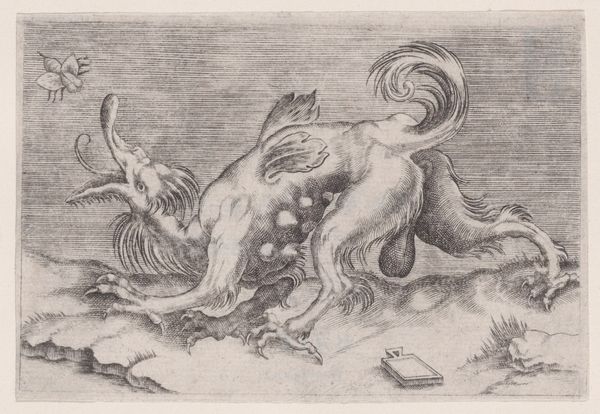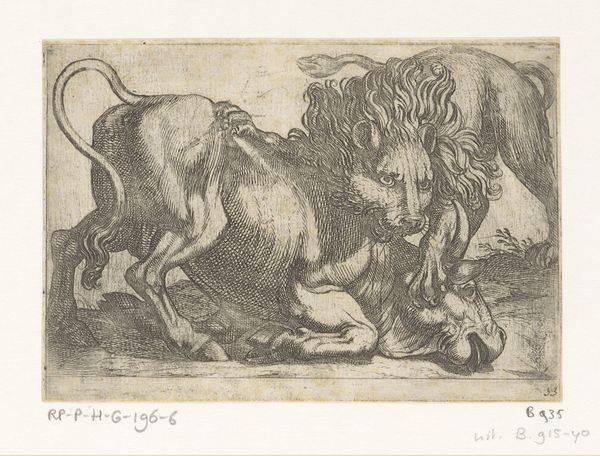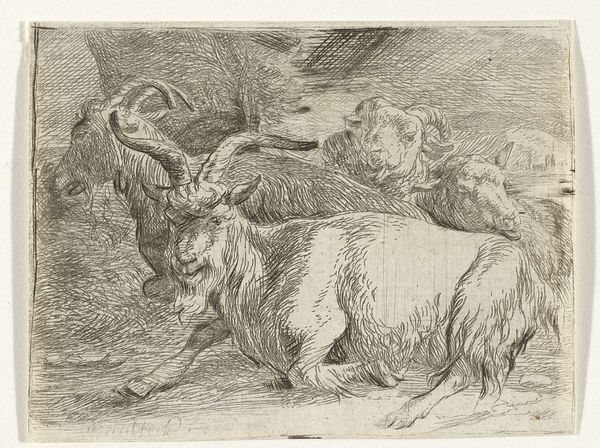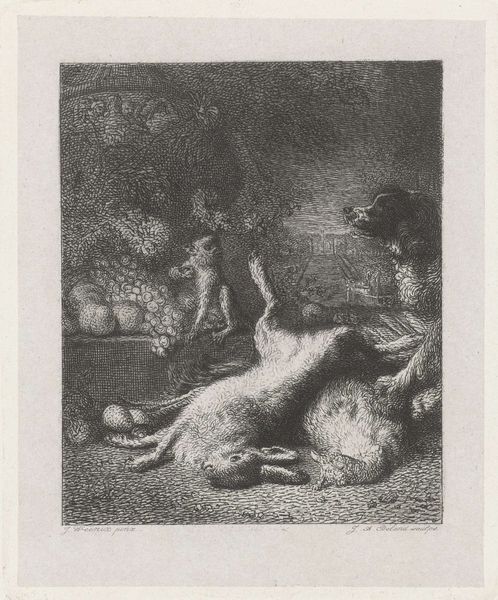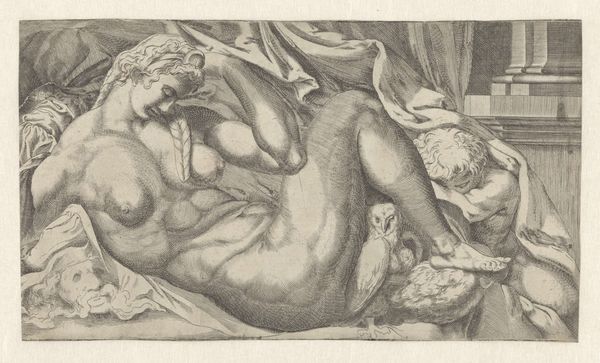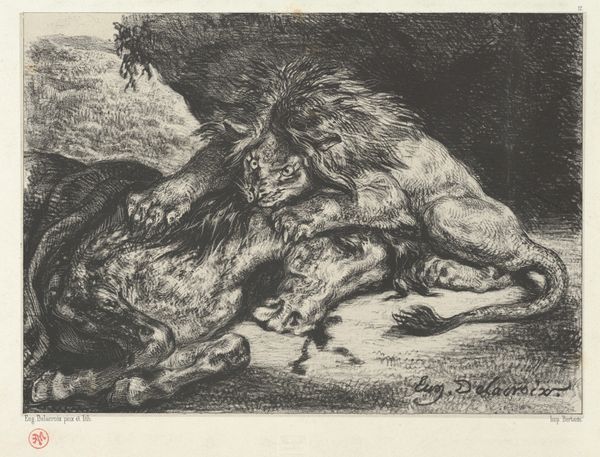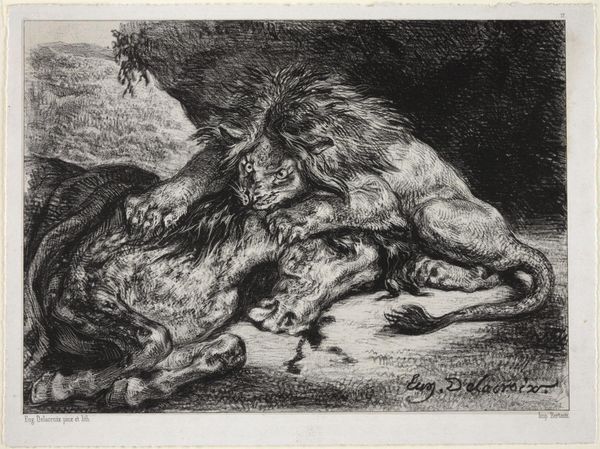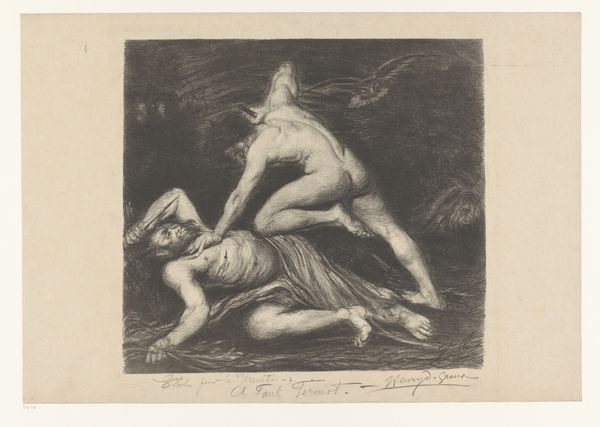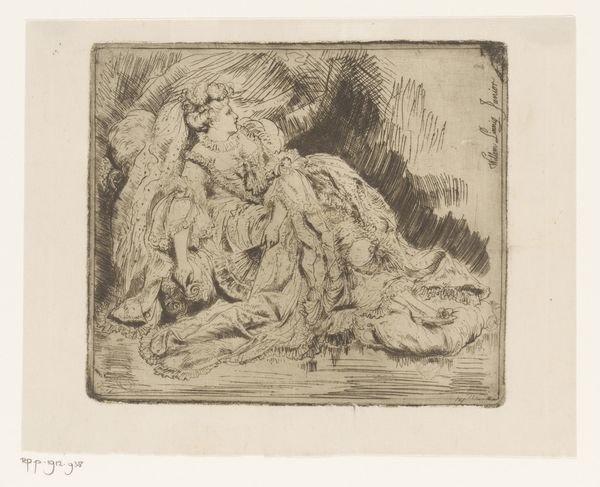
drawing, charcoal
#
drawing
#
baroque
#
animal
#
dutch-golden-age
#
dog
#
charcoal drawing
#
figuration
#
genre-painting
#
charcoal
#
charcoal
Dimensions: height 86 mm, width 144 mm
Copyright: Rijks Museum: Open Domain
Curator: Here we have "Two Playing Dogs," a drawing by Nicolaas Verkolje, dating from roughly 1683 to 1746. It's a charming example of genre art from the Dutch Golden Age, rendered in charcoal. Editor: My first impression is the softness. The muted charcoal palette creates a wonderfully subdued atmosphere, capturing what feels like a genuinely intimate moment of play. Curator: Yes, Verkolje’s technique is notable here. He coaxes a range of textures and tonal subtleties from a relatively simple medium like charcoal, creating depth and dimensionality, especially in the fur. Editor: And consider the context – the Dutch Golden Age was marked by a rising middle class and increasing interest in everyday life. This piece, with its domestic subject, feels part of a broader trend towards celebrating ordinary pleasures. Curator: Precisely. This focus on everyday scenes allowed artists to subtly communicate moral messages, often embedded within seemingly innocuous imagery. Dogs themselves often represented loyalty or watchfulness within households of that era. Editor: True, but there's an element of tension too. The Baroque period wasn't just about sentimental displays; it explored passion and drama. You can see it in the dogs' interaction, they are almost wrestling. Curator: Fascinating point. It prompts me to see an echo of courtly themes of status or power dynamics translated here into the animal realm. And the material reality, charcoal on paper. It’s almost like Verkolje found perfection within simple tools. Editor: Thinking about power, the ownership of dogs themselves can be a marker of privilege. How do we consider these objects within an economy fueled by overseas trade? How did colonization, resource extraction and the rise of a wealthy merchant class change our interactions with animals, and art? Curator: These are important points that certainly add layers of interpretive richness and remind us that no artwork exists in a vacuum. Editor: This playful tableau reveals how class and global exploitation has shaped our relationships with, and representations of animals in Dutch painting. It’s about material pleasure but about global realities, too. Curator: Ultimately, Verkolje’s skilled draughtsmanship allows us glimpses into art’s capacity to capture fleeting moments. Editor: And interrogate long-standing issues within art history. Thanks for your insights!
Comments
No comments
Be the first to comment and join the conversation on the ultimate creative platform.

